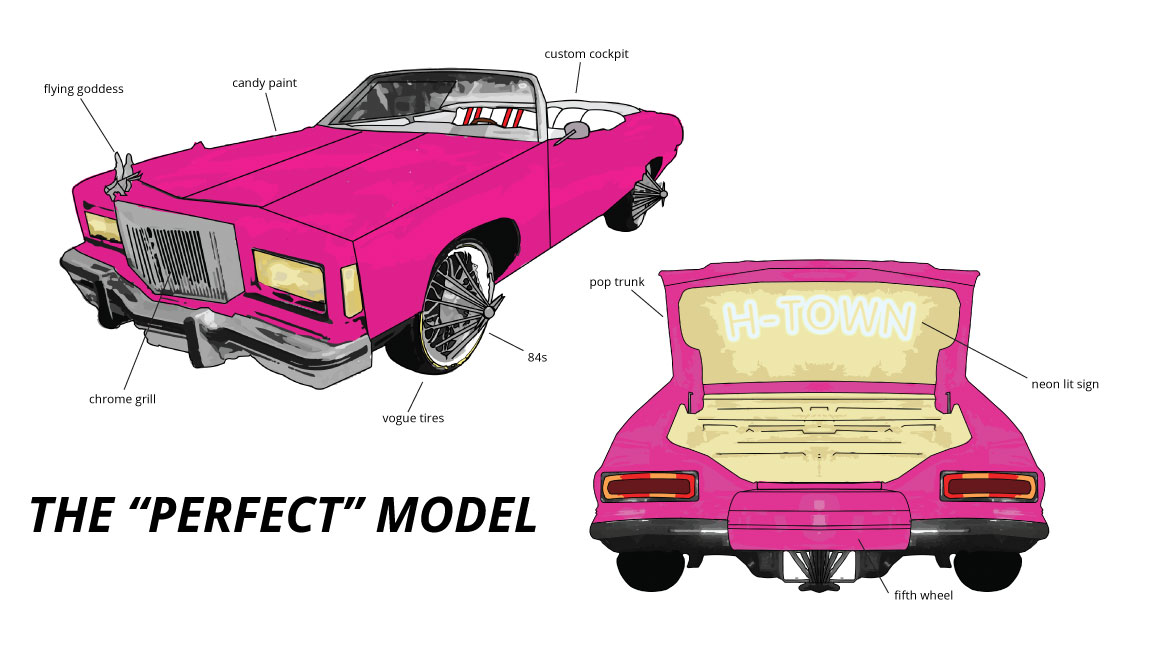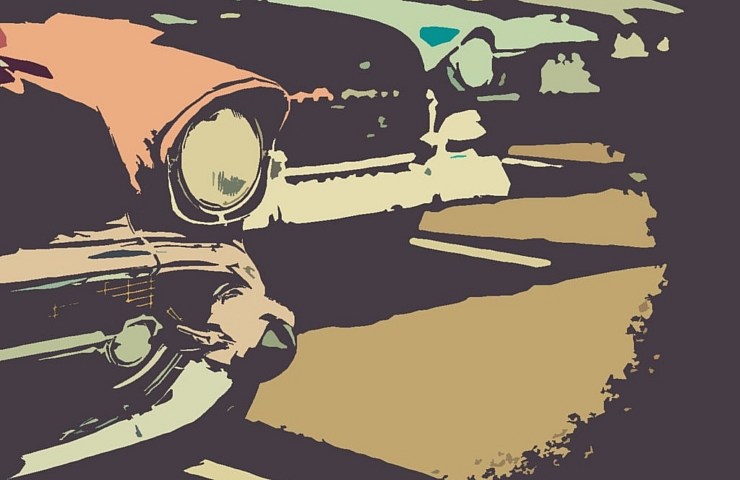It was a typical evening down I-45 when I had my first encounter with the elusive vehicle known as the “slab.”
The traffic was bumper to bumper as usual, so I was able to get a pretty good look at this unusual stead. It was a 1982 Cadillac Eldorado, painted a bright hot pink with swangas stretching out so long I was worried they would hit my car. I heard loud music coming from the car, something reminiscent of that DJ Screw artist a friend had showed me back in high school. When they drove up so that they were now in front of my car, I was able to get a good look at the car from behind. It was then that I noticed that the music wasn’t coming from inside the car, it was coming from the trunk, popped open with a neon lit sign emblazoned on it.
It would be a vast understatement to say that this car blew me away. As a non-Houston native, I thought that this person must be an artist or some type of huge car enthusiast. Little did I know what an integral part of Houston culture these cars were, or what type of culture they cultivated on their own.
What is a slab?
SLAB is an acronym for Slow, Low And Bangin.’ The term comes from the way that the cars sit to the pavement.
Slabs are not to be mistaken with low riders, classic cars or art cars. Slabs are their own unique style of car, a style unmistakably “H-Town.”
When and where did slabs begin?
Slabs have an interesting history, and are very much a product of 1970s pimp culture and Blaxploitation films.
The first slabs came out in the ‘80s, but were a far-cry from the slabs of today. In 1983 and 1984, the car’s signature ‘83 and ‘84 swangas could be bought brand new at a few Houston Cadillac dealers and were a hit in H-Town.
But in 1985, the swangas, that were only produced by the manufacturer Cragar Wheels, were discontinued, and the price of 83s and 84s shot up to $10,000. Riding around in these wheels was dangerous for a while, people would even kill you for having these wheels on your car.
Then, in the ‘90s, Houston based hip hop artist DJ Screw created a type of music described as “Chopped and Screwed,” a sound that quickly became associated with Houston. DJ Screw, along with other notable artists such as UGK, put out this music and in their music, they wrote about H-Town, and driving around in slabs, putting these cars on the map and creating the sound of these cars.
When more people began restoring old cars and Houston rappers fully embraced the slab, the culture was born. But as a result of this boom in slabs, the 84s became even more difficult to get a hold of and by 2000, car theft in Houston was 151 percent higher than the national average. In 2006, as part of a radio station giveaway, Texan Wire Wheels began making new school 84s, dedicated to UGK. By doing this, they made these swangas available to a wider audience, in the process helping diminish a lot of theft.
In 2013, Houston held its first slab parade at MacGregor Park. At the parade, Beyoncé filmed the music video for her song “No Angel” where she references slabs.
What Makes A Slab?
Most people will agree that in order for a car to truly be considered a slab, it must have the following: high-gloss candy paint, elbows (also called swangas) which are basically tire rims that poke outward, a fifth wheel (also fitted with an elbow) showcased in the back, a pop trunk, a flying goddess in the front along with a chrome grill, vogue tires, a customized cockpit, something flashy in the trunk (the neon sign is very common, along with mirrors and vinyl) and last but certainly not least, loud chopped and screwed music coming from your car (preferably the trunk should have a speaker too).

Graphic by Julie Araica
As for the type of car you’re driving, a Cadillac Eldorado convertible circa 1982-1985 is the most common car, but many people can be found driving around in Eldorados from the 1970s as well. Many notable celebrity slabs include different car models, like Chamillionaire’s 1967 Plymouth Fury.
In today’s slab scene, the newer generation may be redefining the rigid requirements of what can be considered a slab. Many people will buy a new car, paint it, put swangas on it and call it a slab.
Many argue that this is just not a true slab though. Period. Whether the culture is expanding, or the younger generation just doesn’t understand the complexity of it enough, only time will tell.
But one thing is for certain, the slab scene which originated right here in H-Town, is expanding across the globe and quickly making a name for itself, swangin’ and bangin’ wherever it goes.





Recent Comments